Hindu History of Afghanistan
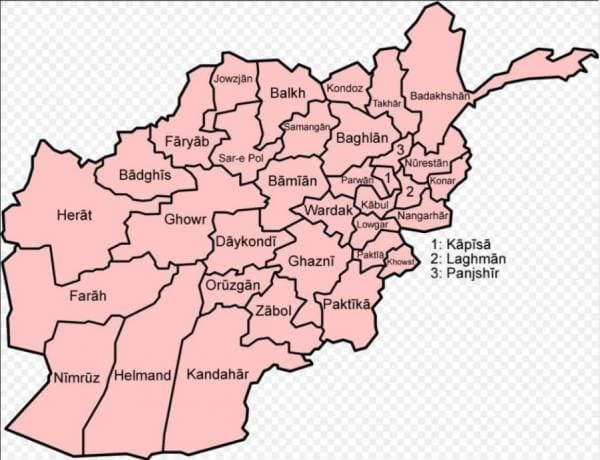
The provinces of Afghanistan. Many of them still retain older Sanskrit names:
- Balkh = Bahlika
- Nangarhar = Nagarahara
- Kapisa = Kapisa
- Laghman = Lampaka
- Kabul = Kubha
- Badakhshan = Dvyakshayana
- Ghor = Giri
- Bamiyan = Varmayana
- Wardak = Vartaka
- Kamdesh=Kamadesha
- Paktika=Paktika
The names of all these places are found in ancient Sanskrit literature.
Note that, Gandhara mentioned in Mahabharat has nothing to do with Kandahar. Gandhara is the Peshawar-Islamabad-Taxila region.
Even as late as 1970, ~4% of the Afghani population was Hindu & Sikh.
Panjshir in Afghanistan means “five lions”. It is named after the five Pandavas who were believed to have attained Mahāprasthāna here according to the native folklore.
Source:
- https://trueindologytwitter.wordpress.com/2020/03/23/the-hindu-history-of-afghanistan/
- https://twitter.com/BharadwajSpeaks/status/1426963262206189568
- https://mobile.twitter.com/BharadwajSpeaks/status/1426995589816872961
When the Taliban destroyed Bamiyan Buddha in 2001, they were happy that the entire ancient Hindu and Buddhist heritage was wiped out of Afghanistan. But they were wrong. Discovered recently in the remote valley of Logar district near Mes Aynak, there survives a majestic carving of Shiva-Avalokiteshwara. This is a late Kushan site in Logar province, Afghanistan (c. 300 CE). The miraculous survival of this sculpture can only be attributed to its high terrain.
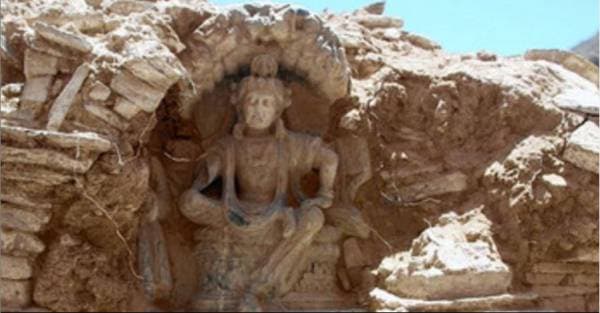
If you read the modern scholarly literature on Mes Aynak, page after page narrates its exclusively Buddhist affiliation. However, coins of trident-holding Shiva were found at the site.
Source: https://trueindologytwitter.wordpress.com/2020/03/22/more-traces-of-hinduism-in-afghanistan/
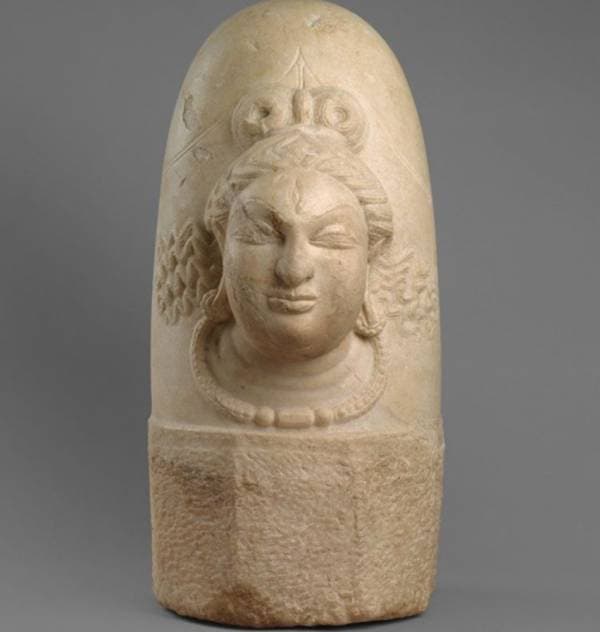
This linga, the aniconic pillar symbol emblematic of the Hindu god Shiva, symbolizes his essential generative powers. Here, the form is addorsed with Shiva’s face in a style reflecting iconographic innovations of the region as well as inherited design conventions from fifth-and sixth-century Gupta north India. The Shahi kingdom flourished in eastern Afghanistan only from the seventh to the ninth century, yet it produced a highly distinctive corpus of Hindu religious imagery. Typically sculpted in white marble, these works reflect links east, most notably to Kashmir for Shaiva imagery, and west, as seen in the flying locks of hair inspired by Sasanian royal imagery.
Source:
- https://trueindologytwitter.wordpress.com/2020/03/22/traces-of-hinduism-in-afghanistan/
- https://www.metmuseum.org/art/collection/search/38246
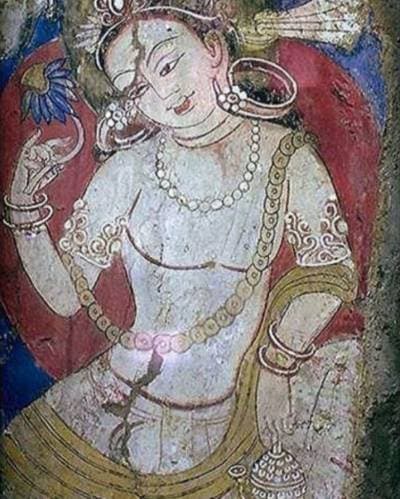
This beautiful 7th-century painting of the deity Shiva Avalokiteshwara was inside the caves of Bamiyan before they were blown up by the Taliban The painting dates from the 7th century in the pre-Islamic period of Afghanistan. Notice the influence of Ajanta art on the painting.
Sources:
- https://trueindologytwitter.wordpress.com/2020/03/31/shiva-painting-in-bamiyan/
- https://en.wikipedia.org/wiki/Fondukistan_monastery
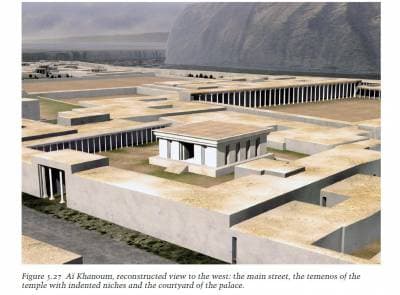
An archaeological reconstruction of a 2200-year-old Krishna temple and the palace from Ai Khanoum, Afghanistan. The temple has not survived but the silver coins of Krishna and Balarama were found at the site.
“Kandahar is the country of Rajputs” - Al Masudi (c.935 CE). Arab Scholar who is widely considered as the Herodotus of Arabs.
Henry Walter Bellew endorses this view. He also says that the Sarabaur is the Pakhto version of Suryabans, “the Solar race”. He further states that Pashtuns have so many points in common with the Rajput customs ‘as to raise the suspicion of a real connection’. Of the several tribes reckoned as Pukhtùn or Pathan several are evidently of Indian origin, judging from their names, such as the Khatrini (Khatri or Hindu military caste), Sheorani (Shiva sect of Hindus), Kakar (Gakar tribe of Indians in the north Panjab), Tori (Tuari tribe of Rajputs). All these Pathan tribes are located on the Suleman and Khybar ranges from the Kabul river in the north to the Kaura or Vahou Pass in the south. Finally, to the north of Kabul are the Kohistani people, or “people of the hill country.” They are composed of the ancient Persians and the ancient Indians. The former as far eastward as the Alishang river; the other onwards thence into Kashmir. The former speak Persian, and are all subjects of the Kabul Government; the other speak a variety of different dialects, which are unintelligible to their neighbours in adjoining glens even though, with one or two exceptions, they are all of cognate stock with the Sanskrit.
These ancient Indians are divided into numerous small communities or tribes, having little intercourse with the world around them, and eternally at war with each other. They are collectively styled Kohistani, but are distinguished as Kafir or “Infidel,”
Sources:
- https://twitter.com/BharadwajSpeaks/status/1415338516486098948
- https://twitter.com/KshatriyaItihas/status/1291344287385362432
- https://twitter.com/BharadwajSpeaks/status/1426487678518710272
- R. Audouin and P. Bernard. in Guillaume. 1991: 81-116
- Afghanistan and the Afghans by H W Bellew (1879)
- https://web.archive.org/web/20060525084024/http://www.dailytimes.com.pk/default.asp?page=story_6-4-2003_pg3_5